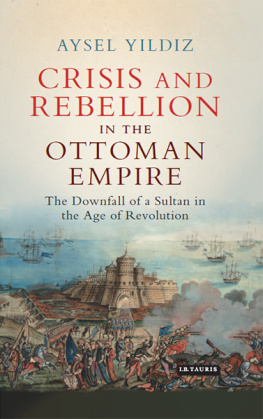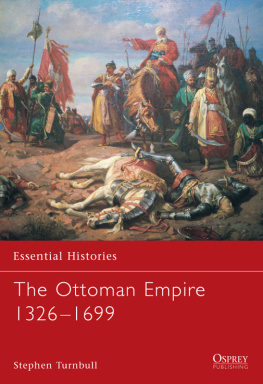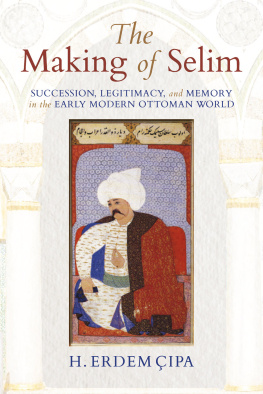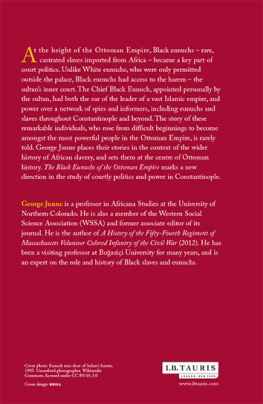
Aysel Yldz (PhD Sabanc University, 2008) is a specialist in late Ottoman history with a focus on social and political movements. Her first book was Asiler ve Gaziler: Kabak Mustafa Risalesi (2007). She is co-editor of A Military History of the Mediterranean Sea: Aspects of War, Diplomacy and Military Elites, with Georgios Theotokis (2017), and War and Conflict in the Mediterranean: A Collection of Papers, with Raffaele D'Amato, Abdlmennan Altnta and Georgios Theotokis (2017). She has also contributed numerous articles to various books and journals.
Terrific This book will become required reading on the deposition of Selim III. Yldz has done a fantastic job of considering the event in all of its possible dimensions and has researched them all meticulously. I was aware of her previous work which was focused on historiography, but here she delves deep into archival history and does not leave any leaf unturned: socio-economic history, political history, diplomatic history, prosopography and cultural history. I loved this book.
Baki Tezcan, Associate Professor of History at UC Davis and author of The Second Ottoman Empire (2012)
CRISIS AND
REBELLION IN
THE OTTOMAN
EMPIRE
The Downfall of a Sultan in the
Age of Revolution
A YSEL Y ILDIZ

Published in 2017 by
I.B.Tauris & Co. Ltd
London New York
www.ibtauris.com
Copyright 2017 Aysel Yldz
The right of Aysel Yldz to be identified as the author of this work has been asserted by the author in accordance with the Copyright, Designs and Patents Act 1988.
All rights reserved. Except for brief quotations in a review, this book, or any part thereof, may not be reproduced, stored in or introduced into a retrieval system, or transmitted, in any form or by any means, electronic, mechanical, photocopying, recording or otherwise, without the prior written permission of the publisher.
Every attempt has been made to gain permission for the use of the images in this book.
Any omissions will be rectified in future editions.
References to websites were correct at the time of writing.
Library of Ottoman Studies 58
ISBN: 978 1 78453 510 0
eISBN: 978 1 78672 147 1
ePDF: 978 1 78673 147 0
A full CIP record for this book is available from the British Library
A full CIP record is available from the Library of Congress
Library of Congress Catalog Card Number: available
To my dear professor, Halil Berktay, to whom I kept my promise
CONTENTS
LIST OF MAP AND TABLES
Map
A Map of Istanbul
Tables
Uprisings in Istanbul
The New Elite: Career and Connections
Coalition of Outs: Career and Connections
LIST OF ABBREVIATIONS
| A. AMD | Bab- Asafi Amedi Kalemi (dos.) |
| A. DVN | Divan (Beyliki) Kalemi Defterleri |
| A. DVN. KLB | Bab- Asafi Kalebend Defterleri |
| A. DVN. SMHM.d | Bab- Asafi Mhimme-i Hmayun Kalemi Defterleri |
| A. E. | Ali Emiri |
| BOA | Babakanlk Osmanl Arivi |
| C. AS. | Cevdet Askeriye |
| C. DH | Cevdet Dahiliyye |
| C. S. | Cevdet Saray |
| D. DRB. MH. | Darbhane-i Amire Evrak Muhasebe Kalemi (dos.) |
| FO | Foreign Office |
| HAT | Hatt Hmayun |
| EF | stanbul niversitesi Edebiyat Fakltesi |
| L | evval |
| M | Muharrem |
| N | Ramazan |
| PRO | Public Record Office |
| R | Rebiylahir |
| Ra | Rebiylevvel |
| aban |
| S | Safer |
| TOEM | Tarih-i Osmani Encmeni Mecmuas |
| TY | Tarih Yazmalar |
| Z | Zilhicce |
| Za | Zilkade |
ACKNOWLEDGEMENTS
A lifetime could easily be spent in the study of Ottoman uprisings; to effect a comparison with the uprisings of other regions and other times would be the work of many generations. After over a decade of research on the uprising of May 1807 I remain surrounded by unsolved puzzles, and to the extent that I have made progress I am indebted to the intellectual community in which I have been fortunate enough to participate. From among the many people who have helped me in the preparation of this study, my thanks must go first to S. Akin Somel, who supported me while I was writing my thesis and developed its themes into this book. My dear professors Tlay Artan, Kemal Beydilli, Edhem Eldem, Halil Berktay and Metin Kunt also helped me greatly. Special thanks go also to Mehmet Ipirli, Addlmennan Altntas, and Hamza Frat, who always encouraged me. My friends Mehmet Savan, Eyp imek and Zehra Savan provided excellent translations of poems and certain quotations. Mehmet Mert Sunar, Sevgi Adak, Serhan Afacan, Merve akr, Brigita Kukjalko and George Theotokis were always available for consultation. Ben Young of Babel Editing and York-Proofreaders Team were extremely helpful in the preparation of the manuscript. My special thanks go to Y. Hakan Erdem, Baki Tezcan and Kahraman akul for their inspiring criticisms and feedback. Above all, I extend my warmest gratitude to Hocam Hlya Canbakal and my dear friend and colleague rfan Kkda for patiently encouraging me, reading drafts and providing valuable feedback. My final thanks go to my dear family, my sisters, brothers and nephews, to my partner Yaar, and to my sweet daughter Elif Mina and son Kemal nar; your support while I have been writing this book has left me with a deep debt of love which it will be my joy to repay.

A Map of Istanbul: Plan de Constantinople. F. Kauffer and I.B. Lechevalier 1807. The Hebrew University of Jerusalem & The Jewish National & University Library.
INTRODUCTION
THE OTTOMAN EMPIRE IN THE AGE OF REVOLUTIONS
The Empire is menaced with total dissolution; the finances are exhausted; and a rebel already threatens to place a stranger on the throne.
From the mid-seventeenth to the mid-nineteenth century there were approximately 19 uprisings in Istanbul, six of which ended with the sultan being deposed.), and three times the reigning sultan lost his throne. The eighteenth century began with an uprising (1703), which also brought about a change in the throne, but in general the sultans of this period seemed better able to weather the rebellious storms; out of seven uprisings in this century, only the uprisings of 1703 and 1730 deposed the ruler. After 67 years of relative stability, the nineteenth century dawned with three serious waves of unrest (1807, 1808 and 1826), with two claiming the throne. The abolition of the janissary army in 1826 put an end to this long tradition of armed dissent in the Ottoman metropole.
Uprisings in Istanbul (seventeenth to mid-nineteenth century) (*= sultan deposed)
| 17th c. | 1622* | 1623 | 1629 | 1632 | 1648* | 1651 | 1655 | 1656 | 1687* |
| 18th c. | 1703* | 1717 | 1718 | 1719 | 1730* | 1731 | 1740 |
| 19th c. | 1807* | 1808 | 1826 |
All of the aforementioned rebellions are typical early modern Ottoman uprisings, in the sense that they were Istanbul-based, palace-centred
Next page












